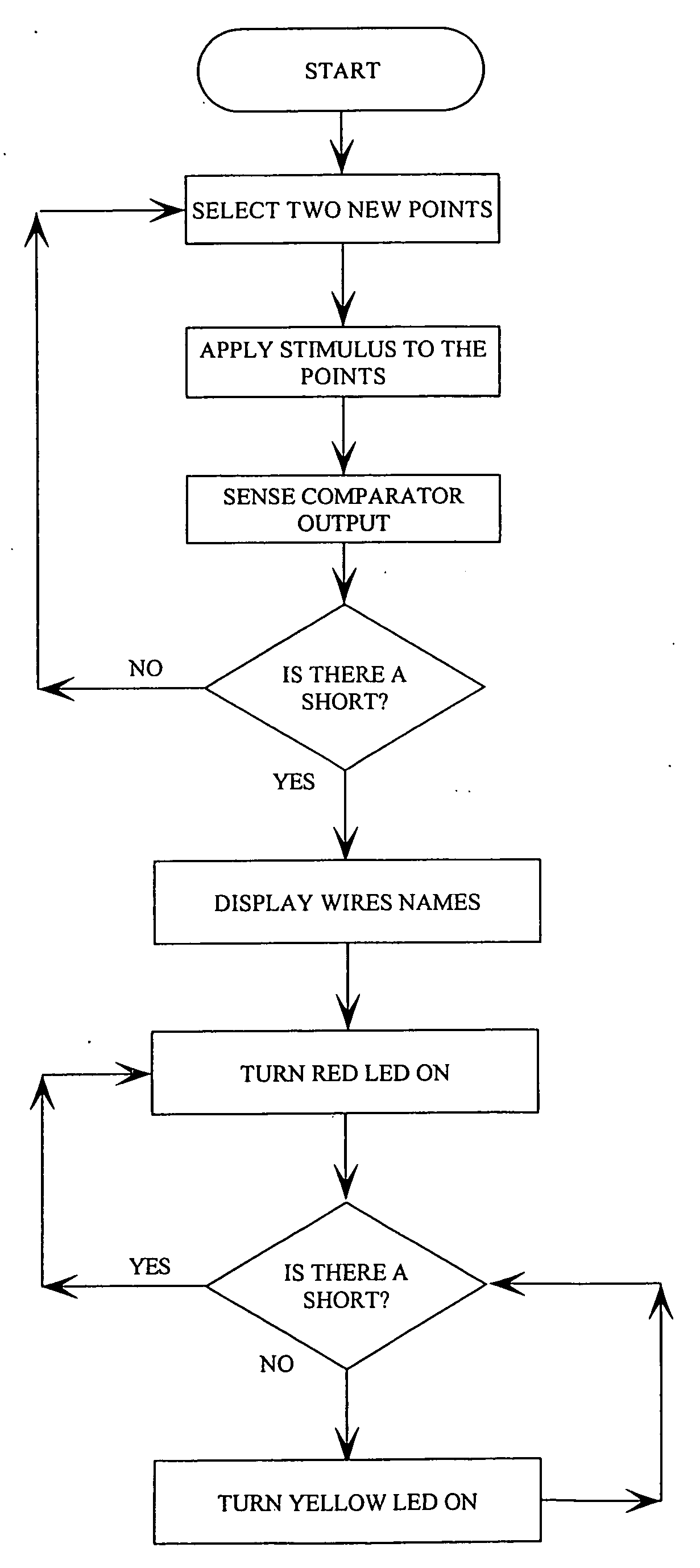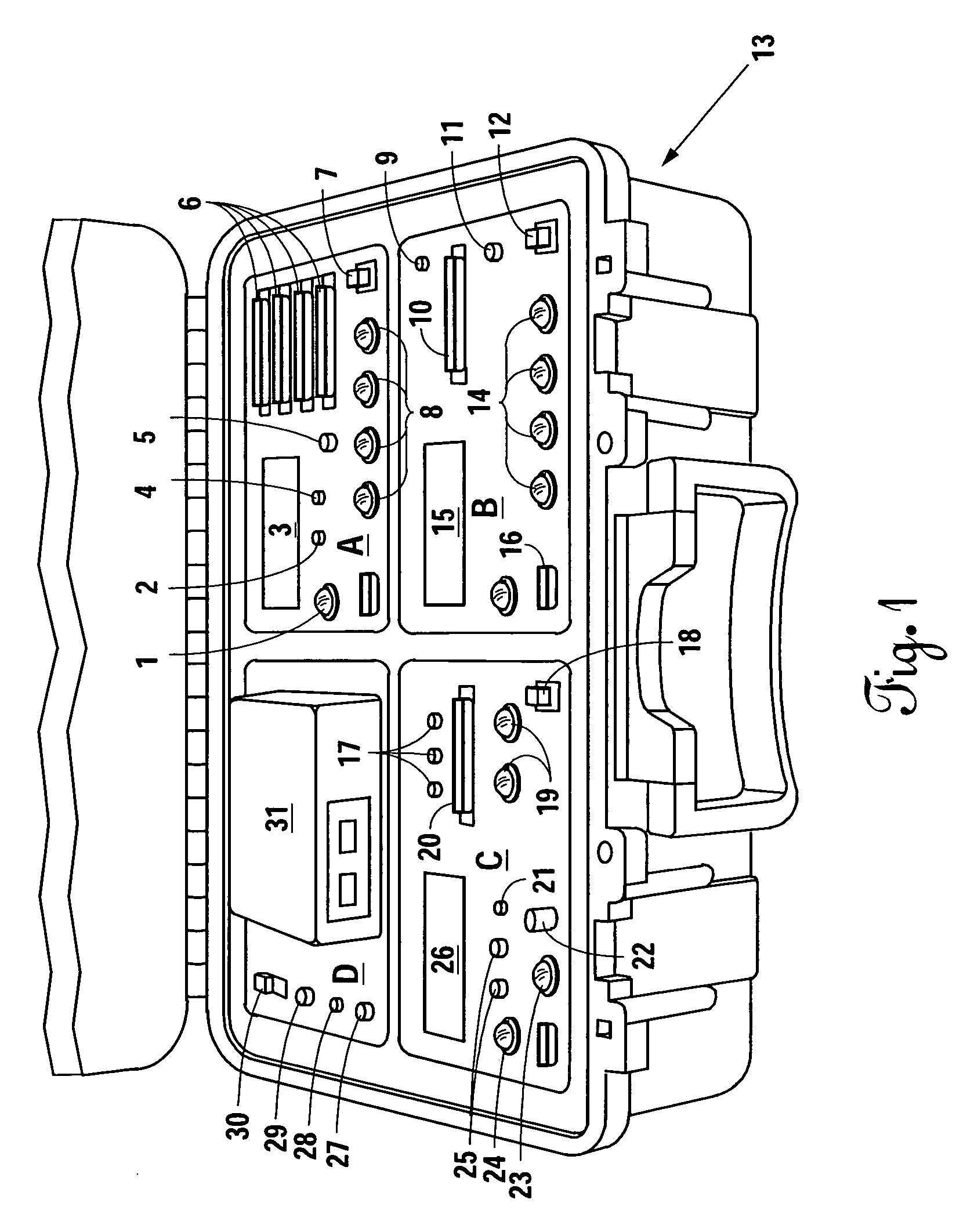System for testing wiring characteristics
a technology for testing equipment and wiring characteristics, applied in the direction of fault location, measurement devices, instruments, etc., can solve the problems of low reliability of wiring harness troubleshooting systems, high cost and complexity of most such systems currently in use, and difficulty in finding intermittent problems, so as to reduce liability insurance
- Summary
- Abstract
- Description
- Claims
- Application Information
AI Technical Summary
Benefits of technology
Problems solved by technology
Method used
Image
Examples
Embodiment Construction
[0036]FIG. 1 illustrates the preferred embodiment of the present invention. The testing unit (13) is divided into four subsystems (A, B, C, D). Subsystem (A) is the “INTERMITTENCE.” It contains the circuitry, the controls and the display. It uses a combination of hardware and software to test and find the location of intermittence in a wire within a wiring harness. The wiring harness connects to Subsystem (A) connectors (6). The power switch (7) provides the external power (27), or the internal battery power. The operator uses four control buttons: LIST, LOOP, INTERMITTENCE, EXIT (8). The LIST control button displays all shorts or opens between the wires. The LOOP control button automatically repeats the test and displays the shorts or opens as they are detected. The INTERMITTENCE control button registers and displays an intermittent short or open. The EXIT button exits the mode of operation. When a control button is pressed for less than two seconds, this Subsystem tests for shorts...
PUM
 Login to View More
Login to View More Abstract
Description
Claims
Application Information
 Login to View More
Login to View More - R&D
- Intellectual Property
- Life Sciences
- Materials
- Tech Scout
- Unparalleled Data Quality
- Higher Quality Content
- 60% Fewer Hallucinations
Browse by: Latest US Patents, China's latest patents, Technical Efficacy Thesaurus, Application Domain, Technology Topic, Popular Technical Reports.
© 2025 PatSnap. All rights reserved.Legal|Privacy policy|Modern Slavery Act Transparency Statement|Sitemap|About US| Contact US: help@patsnap.com



